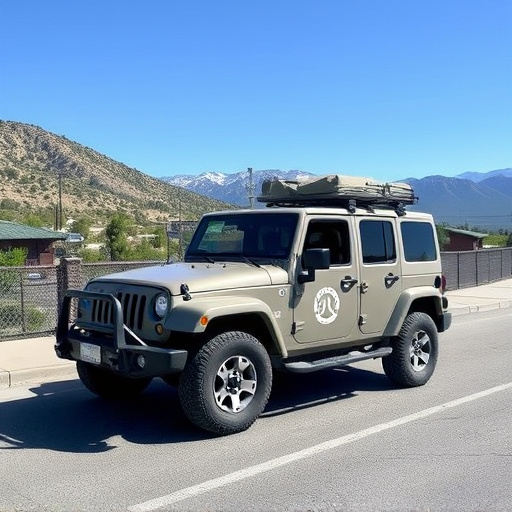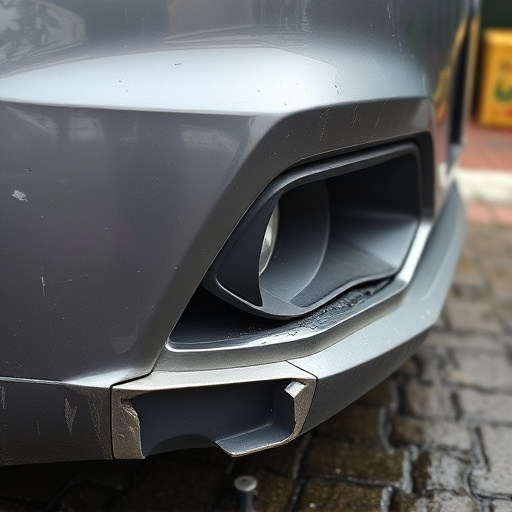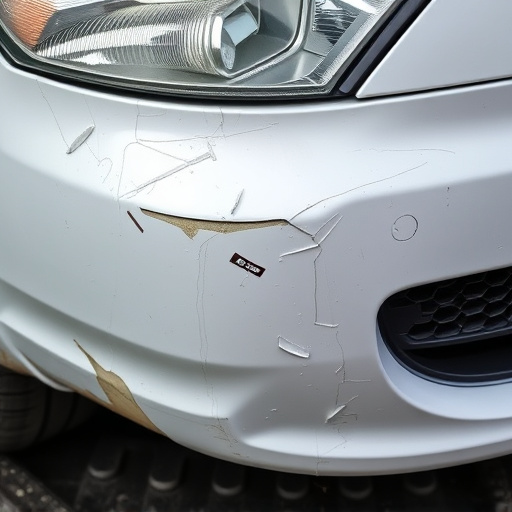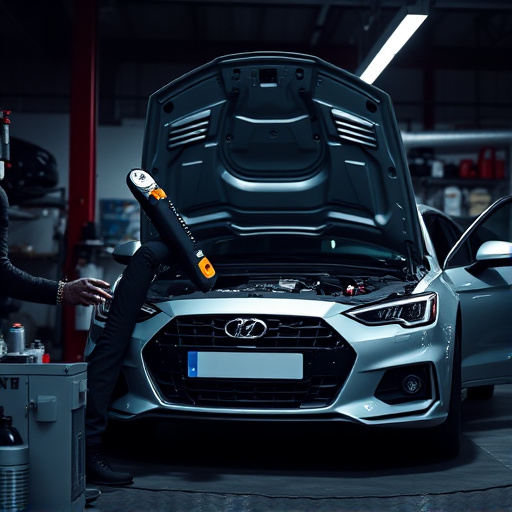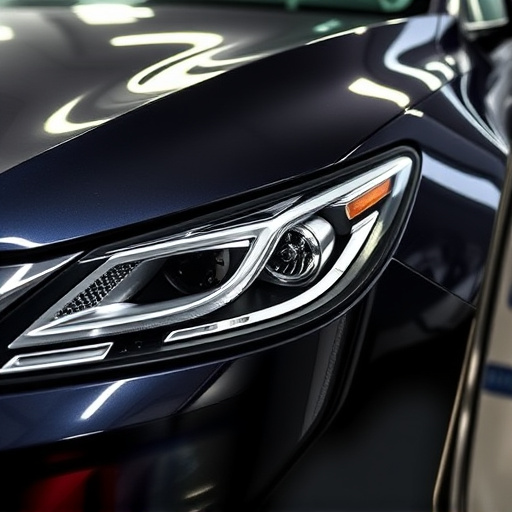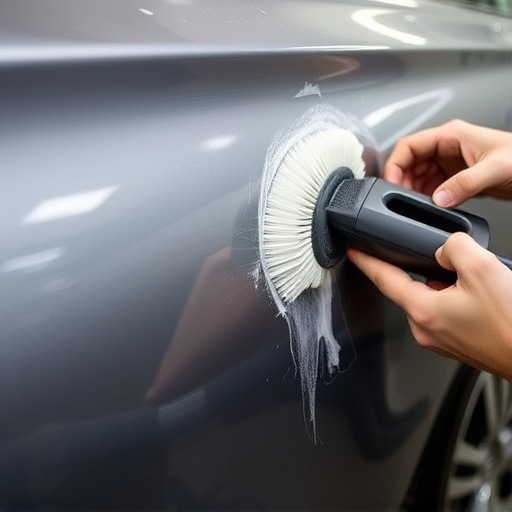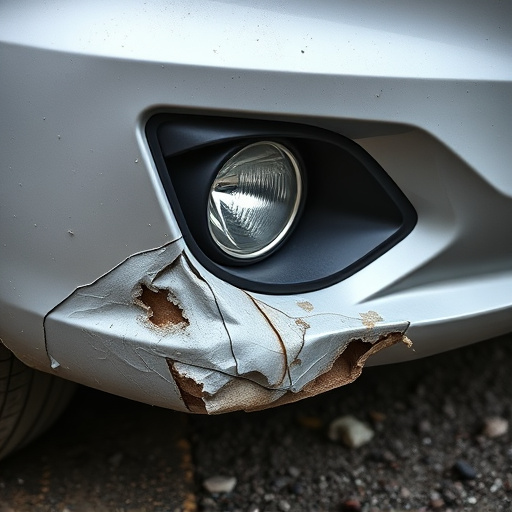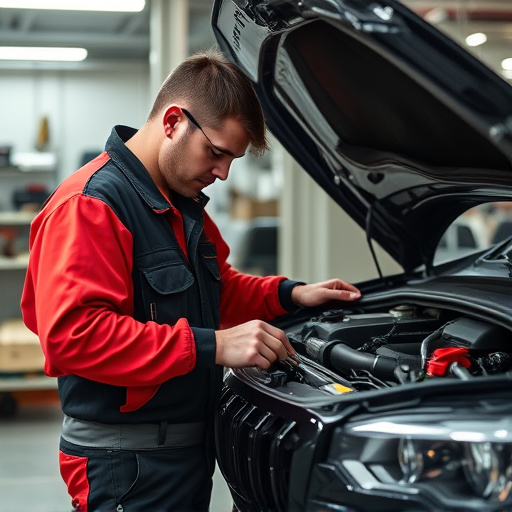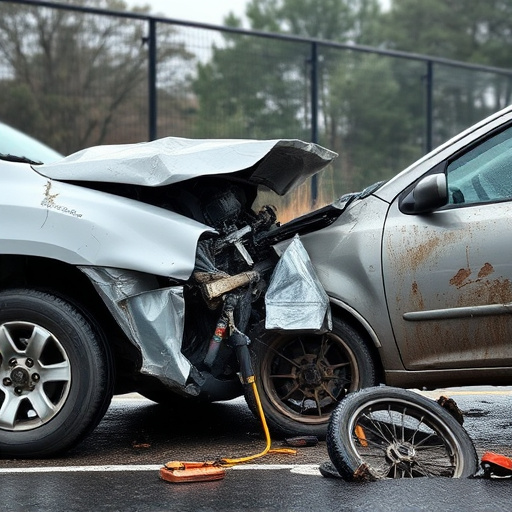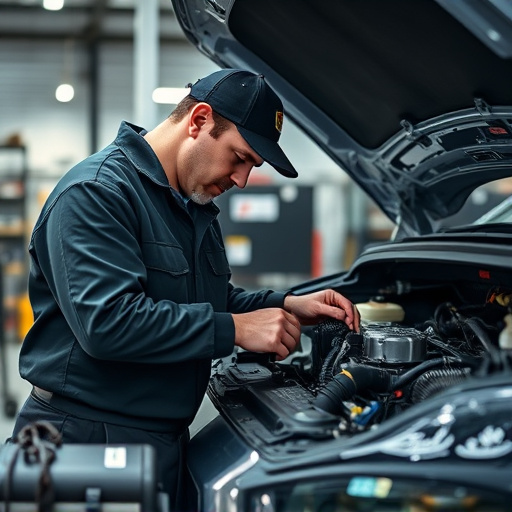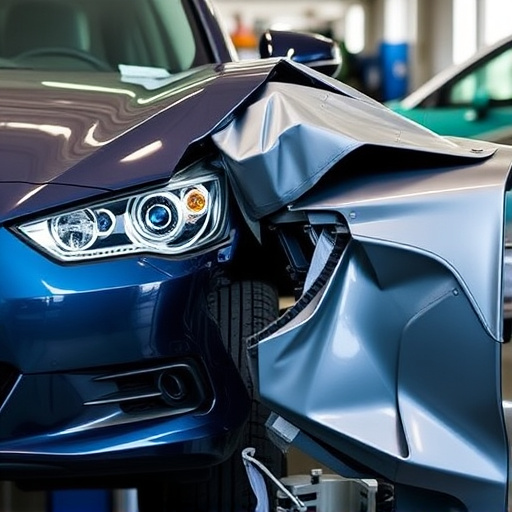Tesla Model 3 front fascia repair requires skilled technicians to replace damaged areas with high-quality new parts, integrating seamlessly into the vehicle's bodywork. Special attention must be paid to maintaining Forward Collision Warning (FCW) system accuracy and reliability, as structural changes could compromise its performance. Proper calibration after repairs is crucial for optimal FCW operation, achieved by parking on a level surface, activating FCW, driving at safe speeds, and avoiding sudden maneuvers.
“If you own a Tesla Model 3, you might have encountered the need for a front fascia repair. This article guides you through the process and its implications on your vehicle’s Forward Collision Warning (FCW) system. We’ll break down the step-by-step repair process, explaining how it affects FCW performance and offering tips for optimal post-repair calibration. By understanding these aspects, Tesla Model 3 owners can ensure their vehicle remains safe and reliable after any front fascia repairs.”
- Understanding Tesla Model 3 Front Fascia Repair Process
- Impact on Forward Collision Warning System: What to Expect
- Tips for Efficient and Effective Post-Repair Calibration
Understanding Tesla Model 3 Front Fascia Repair Process
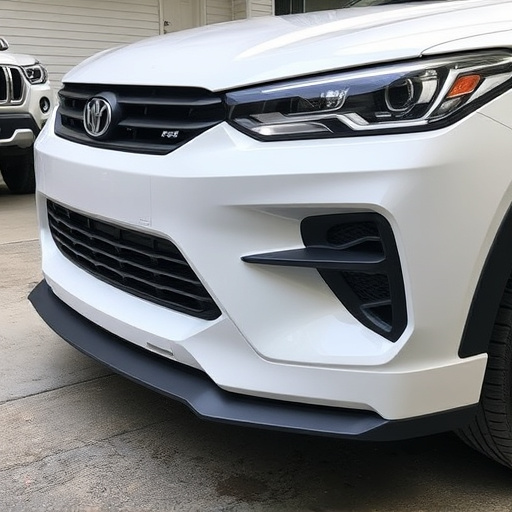
The Tesla Model 3 front fascia repair process involves meticulous work on a crucial component of the vehicle’s exterior. This process begins with identifying and accessing the damaged or faulty front fascia, which is typically the first line of defense in a car’s collision safety system. Skilled technicians use specialized tools to carefully remove the affected area, taking care not to disturb nearby components.
Once the damage is exposed, the repair team replaces the old or damaged parts with new, high-quality pieces designed to fit perfectly within the Model 3’s vehicle bodywork. This precision work ensures that the front fascia not only restores the car’s aesthetic appeal but also maintains its structural integrity and functionality. Collision repair services for the Tesla Model 3 are tailored to address these specific needs, ensuring that the vehicle’s Forward Collision Warning system operates seamlessly after the repairs.
Impact on Forward Collision Warning System: What to Expect
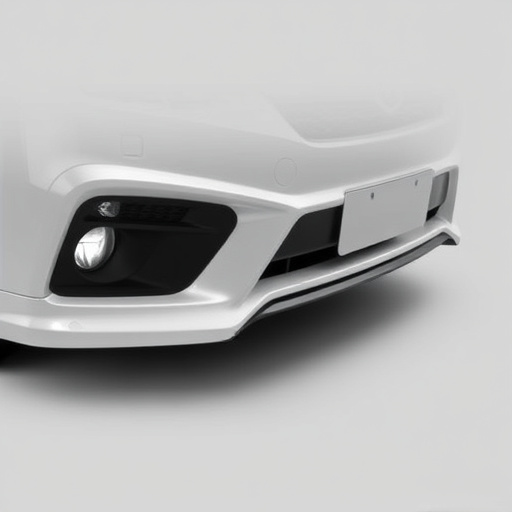
When carrying out a Tesla Model 3 front fascia repair, it’s crucial to understand its impact on the vehicle’s Forward Collision Warning (FCW) system. This advanced driver-assistance system (ADAS) uses sensors and cameras to monitor the road ahead and alert the driver of potential collisions. A well-executed fascia repair should not disrupt these sensors or their field of view. However, if the repair involves structural changes or incorrect alignment, it could affect the accuracy and reliability of FCW, potentially leading to false alarms or missed warnings.
Collision damage repair, including hail damage repair for the front fascia, requires precision and expertise. Skilled technicians understand how to preserve the integrity of the vehicle’s safety systems while restoring its aesthetic appeal. Regular inspections after such repairs can help ensure that the FCW continues to function optimally, providing drivers with the peace of mind that comes with knowing their car is prepared for the road ahead.
Tips for Efficient and Effective Post-Repair Calibration
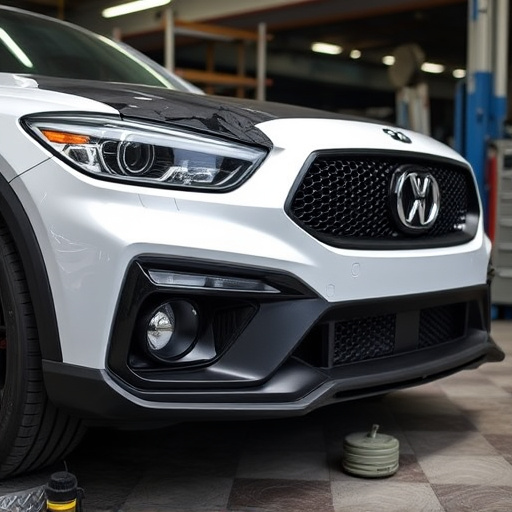
After completing a Tesla Model 3 front fascia repair, proper calibration is crucial for the Forward Collision Warning (FCW) system to function optimally. Start by ensuring the vehicle is parked on a level surface and all windows and doors are closed. Activate the FCW feature through the touchscreen settings to initiate the calibration process. During this time, drive the car at safe speeds, typically between 25-30 mph, to allow the sensors to accurately map the surroundings.
For efficient calibration, maintain a consistent speed and avoid sudden maneuvers or sharp turns. If any repairs involved an auto glass replacement or scratch repair, give the paint job enough time to cure completely before attempting calibration. It’s best to visit a reputable body shop that offers professional services for these types of repairs to ensure optimal results. Keep in mind, multiple calibration attempts may be necessary to fine-tune the system, especially after significant front-end damage or modifications.
In summary, while a Tesla Model 3 front fascia repair involves specialized knowledge, it’s crucial for maintaining vehicle safety. This process directly impacts the Forward Collision Warning (FCW) system, which uses sensors and cameras to detect potential collisions. After the repair, proper calibration ensures optimal performance of FCW, providing drivers with enhanced peace of mind on the road. Additionally, regular maintenance checks are essential to guarantee the system’s accuracy and effectiveness in preventing accidents.

